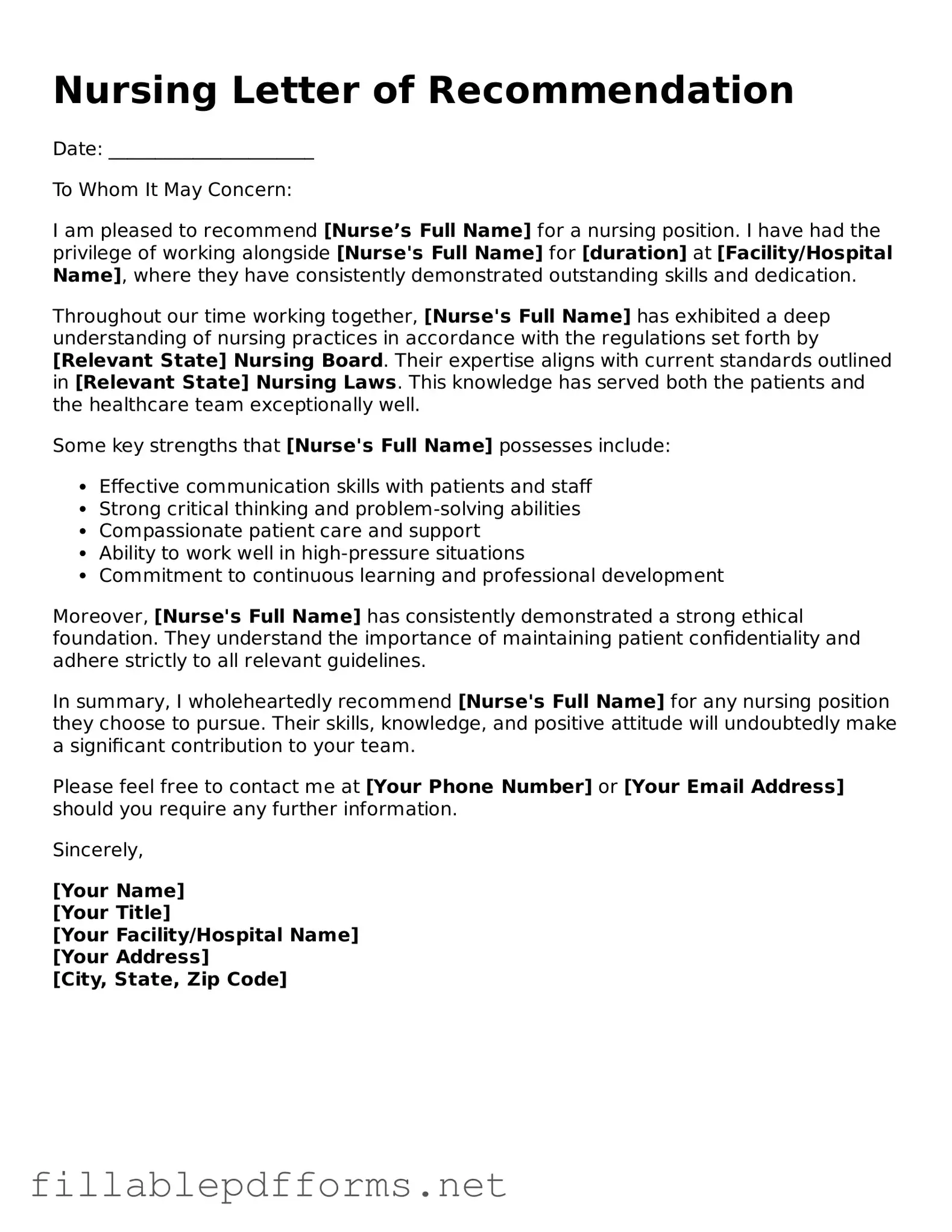When pursuing a career in nursing, a strong letter of recommendation can significantly enhance an applicant's profile. This essential document serves as a testament to a candidate's skills, dedication, and character, often influencing admissions committees and employers alike. The Nursing Letter of Recommendation form typically includes sections for the recommender to provide their relationship to the applicant, specific examples of the applicant's clinical abilities, and insights into their interpersonal skills. Additionally, it often requires the recommender to assess the applicant's work ethic, professionalism, and potential for success in the nursing field. By thoughtfully completing this form, recommenders can offer a comprehensive view of the applicant, highlighting their strengths and unique qualities that make them a suitable candidate for nursing programs or positions. Ultimately, this form not only supports the applicant's journey but also reflects the recommender's commitment to nurturing the next generation of healthcare professionals.
